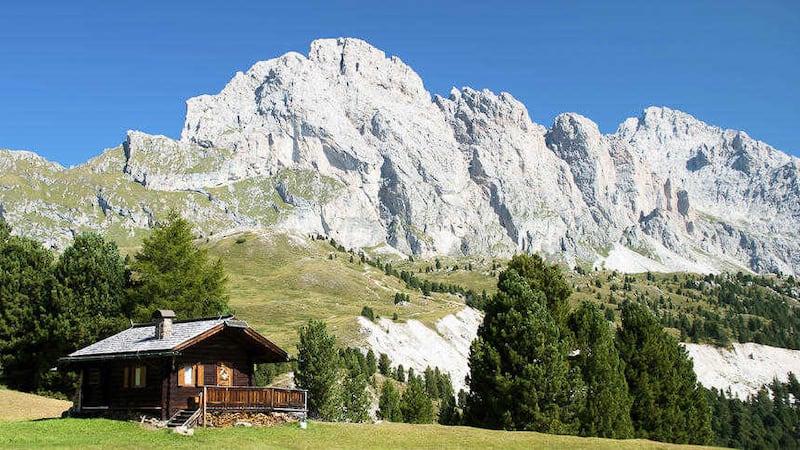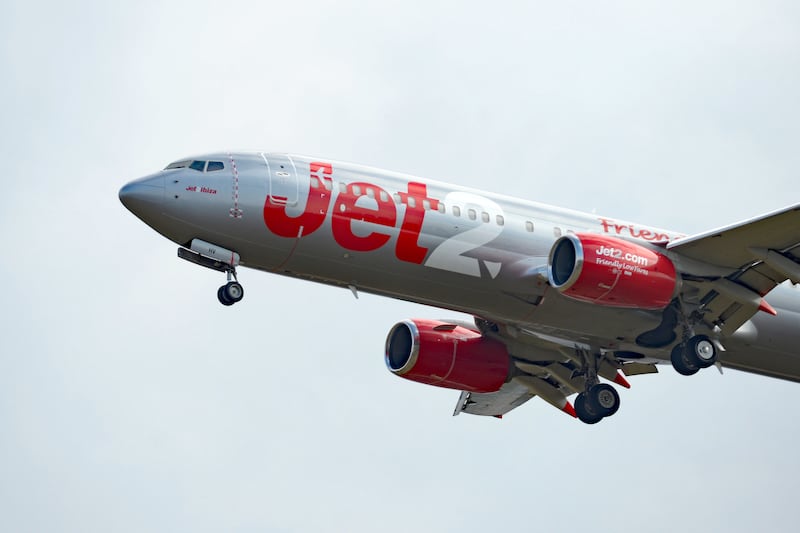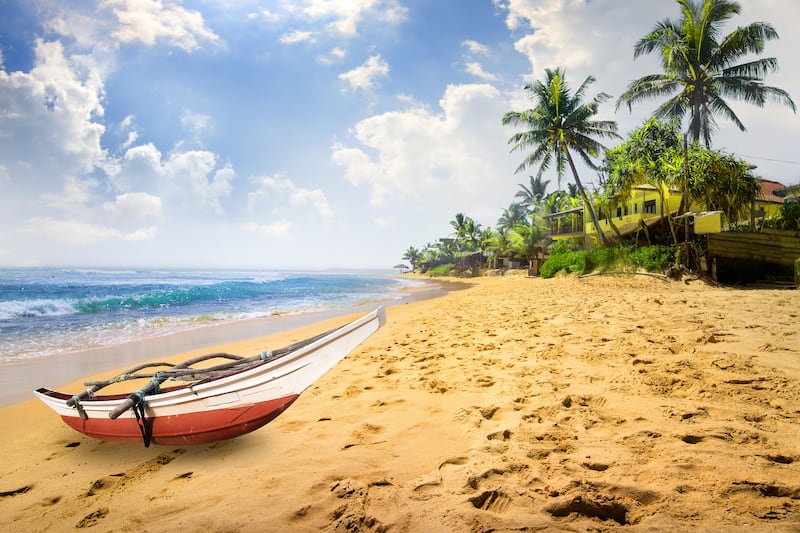WALKING trails in Val Gardena, a 15-mile long valley in Italy’s South Tyrol, are as common as bus stops in Belfast but the scenes that unfold around them come from another world.
The mountains are the Dolomites and their jagged peaks and ridges form a constant backdrop wherever you walk; the sounds as you traverse meadows are the tinkling of cow bells and the chirping of marmots; and with wild flowers such as eidelweiss abounding you’ll soon be humming tunes from The Sound of Music.
Three small towns, with a combined population of around 10,000, make up the human landscape and the idyllically Alpine houses – their balustrades overflowing with geraniums – seem lifted straight from central casting. Only the most dedicated of misanthropes will not feel their spirits raised and the discontents of normal life eased after a walking holiday in Val Gardena.
Although this is Italy, South Tyrol has an autonomous status which reflects the fact that this region was part of the Austrian-Hungarian empire until Britain and allied states promised it to Italy in return for the country’s support in the FIrst World War. Everyone speaks Italian but German is more likely to be heard and Ladin, a minority language that survives in pockets of South Tyrol, also thrives in Val Gardena.
Throw in English, which most people also speak, and you have locals fluently shifting between four languages – occasioning in my case a slow puncture in self-esteem.
The fast and fun way to get started on a walk is to ascend in any cable car or ski lift, or the funicular train from Ortisei – one of the three towns – and head off on one of the walking trails. Signposts indicate the destination and length of each numbered trail and they pop up at any point requiring a change of direction so no orientation problems.
If based in Ortisei, take one of the red-coloured cable cars – minutes away from the hotels – and you’ll soon find yourself at an altitude of 2,000m. An astonishing panorama is immediately visible: stretched out before you is a group of mountains, the highest being over 3,000m and giving its name, Langkofel, to the massif as a whole.
It’s a majestic snapshot of the Dolomites but what gives the scene its unique splendour is the plateau on which you stand. This is Seiser Alm, the highest Alpine meadow in Europe, and totally unexpected after journeying in a cable car up the steep sides of a forest.
It takes less than an hour to walk through lush green pastures on trail number 9 to Saltria, a small cluster of hotels and restaurants, and from here there are several options: head back to the cable-car station, take the Florian ski lift to even higher ground or follow one of the other trails that are signposted from here.
One of these trails, number 18, descends down through the Jender valley and back to Ortisei. This trail, by the side of a river amid attractive spruce trees, is unpaved before eventually joining an asphalt road for the final leg of the two-hour return journey. Bicycles can be taken in the cable car so the whole trip could be thrillingly experienced on two wheels.
The Dolomites belong to the Alps but their geological oddity was first recorded by a French mineralogist, Déodat de Dolomieu, at the end of the 18th century (hence their name). In dolomitic rock the calcium in the limestone sediment formed by a sea bed somehow incorporates magnesium, with different theories accounting for this geological anomaly.
A lovely walk that doesn’t involve cable cars begins at Daunëi (at 1,687m) just outside of Selva – another of the three towns in Val Gardena – and from here it’s a gentle ascent to 2,140m and a looped trail that hugs the scree slopes at the bottom of the towers and pinnacles of rock that characterise the Odle massif.
You’re in the Puez-Odle nature park and there are views of the Swiss Alps some 50 miles away to the west. A good rifugio on the way back – Italian for ‘shelter’ and the name for the mountain huts where travellers crossing the Alps could sleep or find respite from inclement weather – has drinks, food and grand scenery (Rifugio Firenze).
The best recuperation and therapy after treks and climbs is a swimming pool, a sauna and a massage and all three are available at Hotel Adler Dolomiti. There are indoor and outdoor heated pools, a hay-scented sauna and a Finnish sauna with views of the Dolomites.
The spa has a choice of half a dozen different kinds of massages, facial and various beauty treatments and a hair spa.
FACT FILE
:: Fly to Innsbruck or Verona (CityJet and other airlines) for a bus service to Val Gardena (transfertovalgardena.com).
:: Walking is possible throughout the year; the best times being May and June, when Alpine flowers bloom into life, or September and October. The only map needed is No. 05 (Val Gardena) in the Tabacco series, available in any of the three towns (£5). For walking in the Dolomites more generally: Shorter Walks in the Dolomites (Cicerone, £13), Dolomites and eastern South Tyrol (Sunflower, Kindle edition £11). For trekking guides and excursions, see seceda.it. The ski season is from December to Easter.
:: Hundreds of flowering plants can be found in the Dolomites and anyone keen to identify some of them will benefit from A Field Guide to the Flowers of the Alps by Ansgar Hoppe (Pelagic, £20). As it happens, the famed eidelweiss has a blanched appearance and is far from being the most eye-catching, especially when compared to the radiant blue of the gentians.
:: For information and online booking of accommodation, see val-gardena.com and valgardena.it For the Gardena Card (£44 for three days), with unlimited use of cable cars and lifts, see www.gardenacard.it
:: Hotel Adler Dolomiti (adler-dolomiti.com), in the centre of Ortisei, has inclusive rates covering breakfast, afternoon (late lunch) buffets, 5 to 6-course dinners, daily programmes of guided walks and other activities (bikes and e-bikes freely available). In winter: daily guided walks and snowshoe treks. Daily fitness programmes (yoga, pilates, Nordic walking) are included throughout the year. Winter daily rates from £131 per person; from £372 per person for three days (Thursday to Sunday); from £429 per person for four days (Sunday to Thursday). Electric cars are available for £29 a day and test drives are free.








